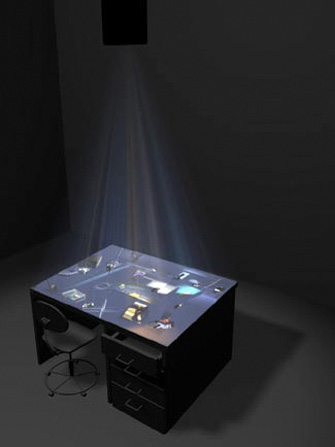Arrival (2003-4 ESHKAR KAISER)
Arrival envisions indoor public space as an intricate temporal puzzle.
Arrival is a multimedia installation that forms a companion piece to the earlier public artwork Pedestrian (2001). As in the earlier work, Arrival is meticulously constructed from human actions recorded through advanced motion-capture technology, in which the movement but not the appearance of the actor is preserved. Such movements are mapped onto synthetic 3D characters, which are then choreographed in an intricate 3D environment.
Where Pedestrian was a meditation on crowd movement in public spaces, Arrival reflects on the patterns of individuals moving in an interior space. This space is an ambiguous one, evoking office, apartment building, mall, and airport – and also the synthetic worlds of the video game.
The piece presents viewers with not only a spatial, but also a temporal puzzle, for while half the figures move forward in time, the others move in reverse; and since the piece loops perfectly, it has no beginning or end illus) . The relationships between the figures and their actions are complex and hard to decode, as they carry and exchange briefcases, edit surveillance videotapes, draw maps, write texts, answer phone calls, steal and photocopy pages, burrow below and clamber above.
The work demands close scrutiny of the kind one imagines a detective devoting to surveillance footage: playing, pausing, and rewinding it. It forms a disturbing mirror to the networked surveillance systems forming not only at our borders, but also in our minds.
For an installation at Siggraph, the artwork was projected from above onto a desktop that became its screen.
